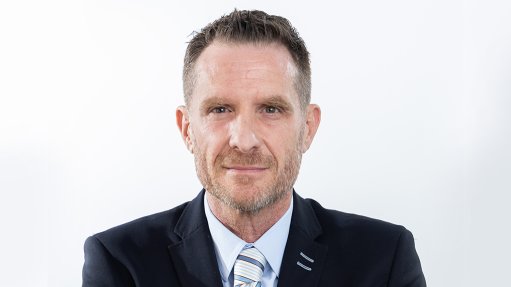Demand driving hydrogen projects pipeline, but few have started construction
A growing demand for more sustainably produced hydrogen is driving the development of low-carbon hydrogen projects, but challenges in terms of cost competitiveness, transport, offtakers and regulation and verification uncertainties are leading to many projects remaining in the design phase.
The low-carbon hydrogen pipeline had seen its global footprint spread, although it remained highly concentrated in developed markets with stronger industries, policies and infrastructure, said global research and data firm BMI power and low-carbon energy head Thomas van Lanschot.
"Between 2022 and 2023, developer interest has soared, adding more projects to the pipeline and doubling it to 400 projects in the first quarter of 2023, although much of this pipeline is in Asia, Western Europe and Australia.
"However, close to 90% of these projects have yet to start construction, while about 30% of projects set for a 2022 start have shifted their start dates," he said during BMI's 'Low Carbon Hydrogen Trends & Risks to Global Growth' webinar on April 25.
BMI is a Fitch Solutions company.
A lack of clarity and expertise in the global hydrogen industry had hampered construction start dates, Van Lanschot noted.
Further, there are many smaller-scale projects in Europe, with many being early-stage pilots for proof of concept to identify risks and reduce the financial burden when moving up in scale.
Proving success at these early stages was important for the development of a sustainable hydrogen pipeline, he said.
Low-carbon hydrogen includes blue hydrogen, which is produced from fossil fuels and includes the use of carbon capture and storage (CCS) technologies to reduce emissions, and green hydrogen, which is produced from renewable energy sources.
The blue hydrogen investments were concentrated in only a few developed economies that typically had ample domestic gas resources at favourable prices, noted BMI oil and gas associate director Emma Richards.
"For blue hydrogen, CCS capacity is key. CCS is not widely used or mature, leading to a high price tag, but it is more established in some markets than others and the potential growth of CCS capacity is considerable, particularly if there is enough CCS capability and supportive domestic policies and regulations," she said.
Currently, grey hydrogen, made using natural gas, and brown hydrogen, made using coal, represented about 95% of the hydrogen produced and consumed worldwide. Grey hydrogen production represented about 6% of global gas resources use and brown hydrogen production represents about 4% of global coal resources use, said Van Lanschot.
Grey and brown hydrogen production emitted about 800-million tons of carbon dioxide (CO2) a year, which is more than Germany's total yearly emissions, he pointed out.
Naturally, this has become a key topic and has contributed to the significant increase in scope of emergence of low carbon hydrogen alternatives, he added.
However, despite some of the potential benefits of blue hydrogen, including the ability to scale up without renewables and reducing stranded assets, green hydrogen had a much faster-growing upside, which was reflected in the estimated outputs by 2030 of about 30-million tonnes a year of green hydrogen production, which would equate to about 80% of global green hydrogen demand, he said.
Further, green hydrogen projects still face substantial risks, including unlocking the bankability of such projects remaining a core risk. This can potentially be eased through government support, offtakers, the establishment of fair financial agreements and policy coordination between markets to establish more homogenised international standards, markets and trade.
"Green hydrogen will run into challenges, but also presents opportunities. For example, green hydrogen requires vast amounts of renewable energy.
"A large amount of electrolyser capacity will be required to produce the estimated volumes of hydrogen. However, this could unlock component market constraints and green hydrogen can lead to more renewable energy projects," illustrated Van Lanschot.
A short-term bottleneck was the increase in prices of renewable energy. However, this was expected to decline and achieve prices below 8c/kWh (in US dollar terms) and was not seen as a threat to the long-term growth of green hydrogen, he added.
Meanwhile, key trends in the global north included that the region would produce an estimated 7.6-million tonnes a year of low carbon hydrogen by 2030, and there was a project pipeline of 97.4 GW of renewable energy, with 76% of projects in North America and Western Europe, said BMI low-carbon energy associate analyst Ella Doyle.
Further, the global south would produce an estimated 7.4-million tonnes a year of low-carbon hydrogen by 2030, with much of this concentrated in Asia, India and Australia, said BMI low-carbon energy industry analyst David Thoo.
"We believe Asia holds the highest potential for green hydrogen production and consumption in the global south, and this will gradually be capitalised on during this decade. The region has a mix of markets that perform strongly in terms of risks and reward, signalling key importing and exporting green hydrogen markets," he highlighted.
The pipeline of green hydrogen projects in Asia has strengthened over the past year, increasing from 35 GW in the fourth quarter of 2021 to 66 GW in January 2023.
"This expansion of the pipeline is mainly in Australia, but, out of 80 projects, only nine have reached the construction stage, totalling 3 GW of capacity," he said.
However, green hydrogen projects have been witnessed in all regions of the global south, including Asia, Australia and New Zealand, the Middle East and North Africa, India, and sub-Saharan Africa, he added.
"The opportunities [for green hydrogen in the global south] are mainly in large markets that are strongly growing renewables," he noted.
Additionally, the markets in the global south are mainly fragmented, without a central structure and a lack of verification, standards and certification. The markets are also often separated by large bodies of water, which add further geographic challenges for hydrogen trade.
The high capital requirements for green hydrogen increased the risks of projects not progressing, and the lack of standards, certification and verification, and a lack of offtakers in the region made investments more challenging, said Thoo.
A key downside risk for green hydrogen in the global south was if the region continued to depend on fossil fuels for energy, as renewable energy is a key feedstock for green hydrogen, he added.
Meanwhile, a major determining factor of where and when low-carbon hydrogen projects would come online was the price point. The price of grey hydrogen was about $2/kg on average. The rate of low carbon hydrogen sources coming online hinged on parity with this price point, said Van Lanschot.
With the volatility in the natural gas market, gas prices were much higher and were expected to remain higher for longer, which fed into the low carbon hydrogen space, he said.
However, the band of affordability between green and grey hydrogen would narrow to 2030 and would see cases where green hydrogen would be able to compete, and that $2/kg was not beyond the realm of possibility for low carbon hydrogen, particularly if derived from electrolysis, he said.
Additionally, freight and transport had emerged as key hydrogen offtakers across various markets, but the top two leading offtakers for green hydrogen were set to be for ammonia production and steelmaking, he noted.
Article Enquiry
Email Article
Save Article
Feedback
To advertise email advertising@creamermedia.co.za or click here
Comments
Press Office
Announcements
What's On
Subscribe to improve your user experience...
Option 1 (equivalent of R125 a month):
Receive a weekly copy of Creamer Media's Engineering News & Mining Weekly magazine
(print copy for those in South Africa and e-magazine for those outside of South Africa)
Receive daily email newsletters
Access to full search results
Access archive of magazine back copies
Access to Projects in Progress
Access to ONE Research Report of your choice in PDF format
Option 2 (equivalent of R375 a month):
All benefits from Option 1
PLUS
Access to Creamer Media's Research Channel Africa for ALL Research Reports, in PDF format, on various industrial and mining sectors
including Electricity; Water; Energy Transition; Hydrogen; Roads, Rail and Ports; Coal; Gold; Platinum; Battery Metals; etc.
Already a subscriber?
Forgotten your password?
Receive weekly copy of Creamer Media's Engineering News & Mining Weekly magazine (print copy for those in South Africa and e-magazine for those outside of South Africa)
➕
Recieve daily email newsletters
➕
Access to full search results
➕
Access archive of magazine back copies
➕
Access to Projects in Progress
➕
Access to ONE Research Report of your choice in PDF format
RESEARCH CHANNEL AFRICA
R4500 (equivalent of R375 a month)
SUBSCRIBEAll benefits from Option 1
➕
Access to Creamer Media's Research Channel Africa for ALL Research Reports on various industrial and mining sectors, in PDF format, including on:
Electricity
➕
Water
➕
Energy Transition
➕
Hydrogen
➕
Roads, Rail and Ports
➕
Coal
➕
Gold
➕
Platinum
➕
Battery Metals
➕
etc.
Receive all benefits from Option 1 or Option 2 delivered to numerous people at your company
➕
Multiple User names and Passwords for simultaneous log-ins
➕
Intranet integration access to all in your organisation





















